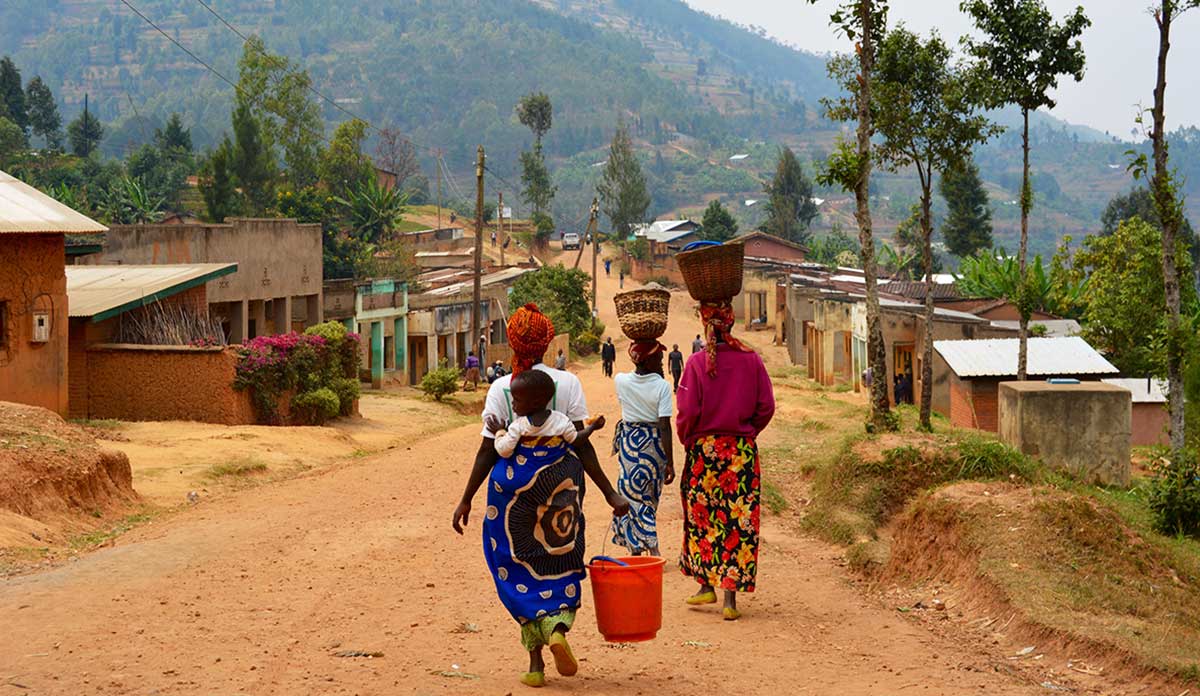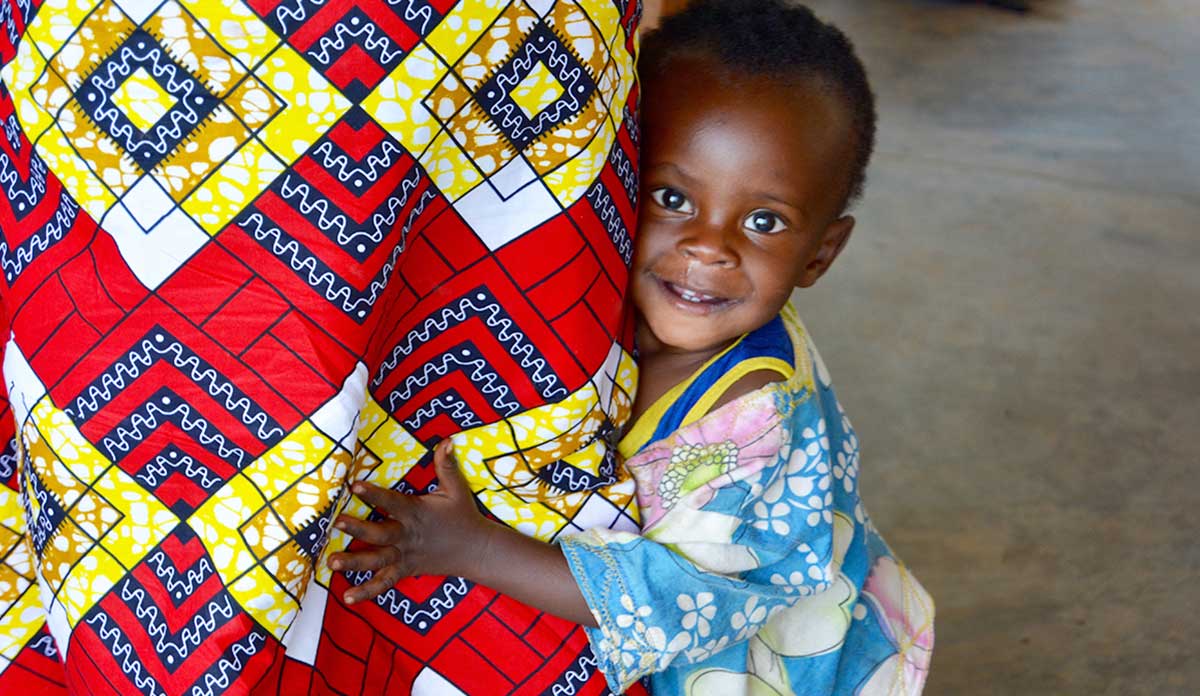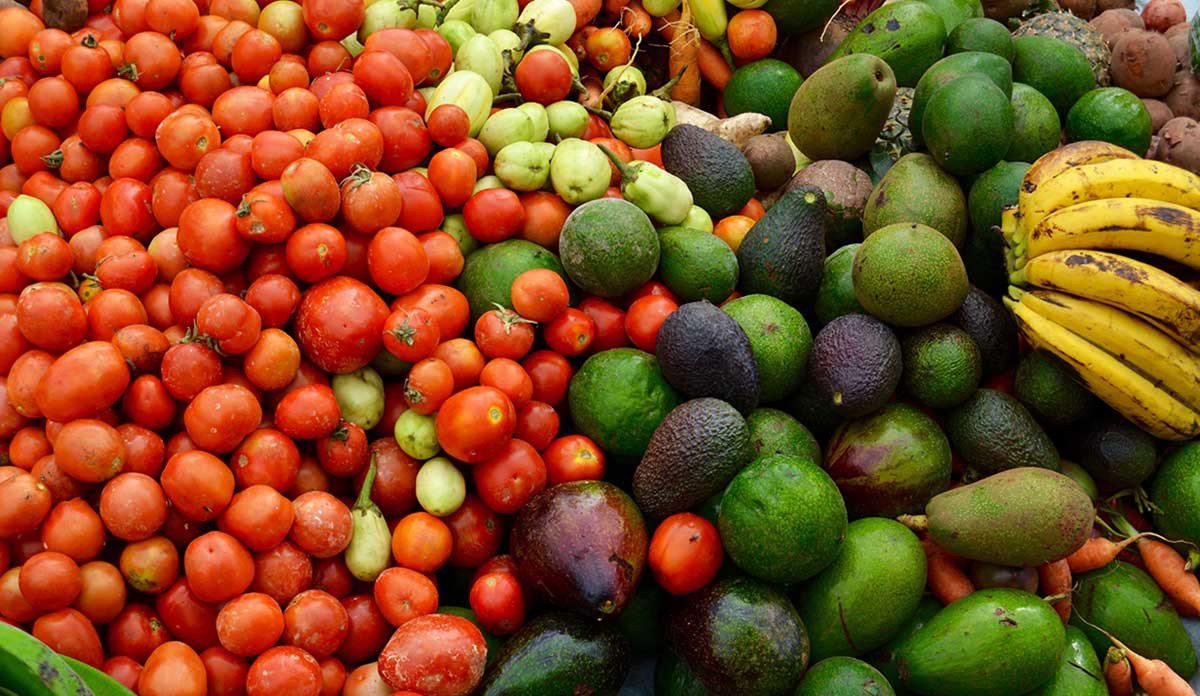The world is in a nutrition crisis. Malnutrition directly affects one in three people, placing it at the forefront of global health challenges. Of the 667 million children under the age of five, researchers estimate that 159 million are either chronically malnourished or stunted. That amounts to almost a quarter of children globally.
The problem is even more dramatic in Rwanda. About 37 percent, or 642,360 children, under the age of five are chronically malnourished. Yet, the world produces more than enough to feed the entire global population. In fact, one third of all food produced (1.3 billion tons) is never consumed. So why is hunger so prevalent?
To truly understand and address this problem, we must examine the root causes rather than continue to look to increased food production as the main solution. At Gardens for Health International (GHI), we understand that there are a number of complex, interrelated factors that go beyond food production that may impact a family’s nutrient security. Some of these factors include:
1. Poverty
People living in poverty struggle to afford nutritious foods for themselves and their families. Often, they lack access to important agricultural inputs such as seeds and fertilizers, making it impossible to cultivate the crops that could feed their families. Moreover, malnutrition and poverty exist in a vicious cycle – children who are malnourished face cognitive impairment, are less likely to perform well in school, and therefore less likely to be productive as adults. As a result, they either struggle to earn enough income in adulthood to purchase nutritious foods or they don’t have the productive capacity to grow the food needed to feed their families.
2. Lack of Knowledge
Level of maternal education is another important factor contributing to the nutritional status of women and children globally given that decisions about food quality and quantity, household hygiene practices, and disease management are often made by the mother. However, we see a relative lack of knowledge around nutrition in many resource-poor environments where educational attainment may be low. Vestine Bayavuge, a Gardens for Health International graduate from Shingiro, Rwanda remarks, “I was born a farmer, I would cultivate crops for two purposes, either for selling at markets or for home consumption. I never considered the nutritional benefits of crops before.” Datvia Nyirarukumdo, from Busogo, Rwanda, echoes this statement. “We’ve had a good harvest of potatoes and beans and everything else” she says, “but we used to think that nutritious food was composed of potatoes and beans only… I didn’t know the benefits of growing vegetables and I couldn’t cook them.” The link between knowledge and improved health outcomes is well documented and plays a significant role in explaining why malnutrition is not simply an issue of food security or access.

3. Gender Imbalances
Social and economic inequalities between men and women also stand in the way of balanced nutrition. More often than not, malnutrition disproportionality affects women. In households vulnerable to food insecurity, women are shown to be at greater risk of malnutrition than men. Malnutrition in mothers, especially those who are pregnant or breastfeeding, can create a cycle of deprivation that increases the likelihood of a low birth weight child and childhood malnutrition.
Additionally, lack of decision-making power around family planning means that women have less ability to harmonize childbirth and breastfeeding schedules, which has direct implications for nutritional status. Agnes Mukankuranga, a mother of five from Rubungo, Rwanda says: “As regarding birth spacing, I would stop breastfeeding when my child was only one year old because I was pregnant again. When you stop breastfeeding and you don’t have resources to provide food, your children can become malnourished. That is what happened in my family. My children are all one year apart. But since I started [family planning], they started to improve.” As women also tend to be the primary caregivers for their children, if they lack the freedom to make household decisions, their child’s health is negatively impacted. Studies show that when women have the authority and ability to make decisions in the household, a higher proportion of family income will go to food, nutrition supplements, and health care.
4. Disease and Infection
Finally, there is a strong interdependence between malnutrition and infection. While malnutrition can cause increased susceptibility to infection, infection also contributes to malnutrition – reinforcing a vicious cycle. The consequences of an inadequate diet include weight loss, damage to mucus membranes surrounding vital organs, impaired growth and development in children, and lowered immunity. This makes it easier for children to become infected by various pathogens.
Once infected, nutritional status is further aggravated, which, in turn, causes reduced dietary intake. Chronic exposure to pathogens from living in contaminated conditions can worsen health outcomes and damage the intestine, impairing long-term nutrient absorption. As a result, even if an individual were consuming enough food with the correct nutrients, the body wouldn’t be able to use and process those nutrients. In a recent study measuring the costs of hunger in Rwanda, it has been estimated that in 2012 there were an additional 280,385 clinical episodes as a result of childhood undernutrition. Of those, 47,064 were directly resulting from diarrhea, fever, respiratory infection, and anemia – all conditions correlated with the adverse impact of malnutrition.

At Gardens for Health International, our Health Center Program is designed to address these complex factors as well as many others including HIV/AIDS, gender-based violence, listening and communication, hygiene, traditional healing, mental health, and more. By taking a comprehensive approach that addresses root causes, we acknowledge the lack of a straightforward link between agricultural yield and improved nutrition while also reflecting the lived realities of partner families. By addressing these root causes head on and making sure that partner families have the knowledge, skills, inputs, and peer support they need to thrive, we take steps every day to eradicate chronic childhood malnutrition in Rwanda.
To learn more about Gardens for Health’s work visit www.gardensforhealth.org
Images courtesy of Gardens for Health.













